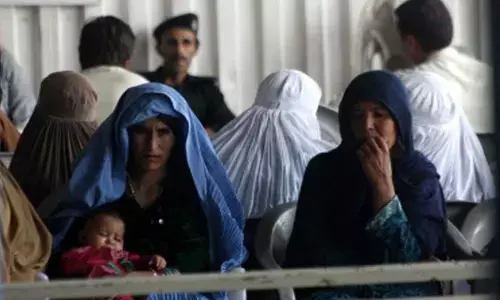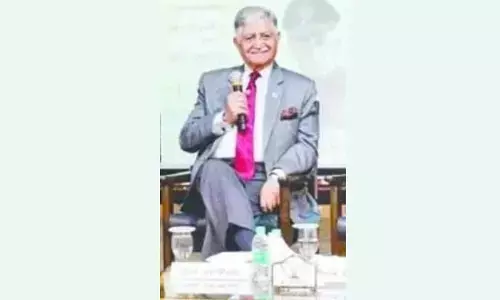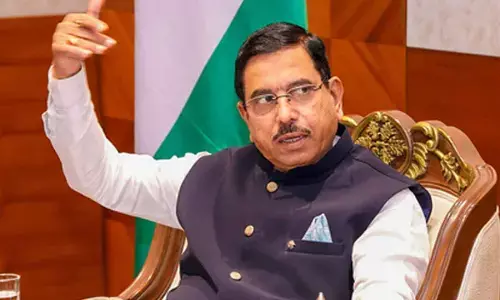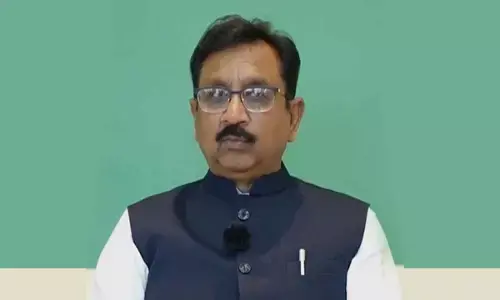The Blurred Line Between Exploitation and Empowerment in Creative Media

All forms of media have for long been an instrument in relaying information from the ranks of those that may otherwise struggle to bring their views to a platform.
All forms of media have for long been an instrument in relaying information from the ranks of those that may otherwise struggle to bring their views to a platform. Be it visual arts or literature, marginalised communities have often found an abutment in this means of communication. The prevalent suppression of certain groups in other spheres of society, also result in their presence in media being concealed or contorted, however another persistent phenomenon is the almost inadvertent perpetuation of stereotypes and misconceptions, in works that aim to emphasise on the blemishes of certain social issues.
Article 15, directed by Anubhav Sinha, is a 2019 Bollywood film following the story of a policeman brought face to face with the harsh reality of caste based discrimination which he decides to counter. Critically acclaimed for its performances and supposedly bold choice of plot, the film takes shape as the epitome of what is commonly called a ‘saviour complex’. This essay thus puts the film in comparison to Mari Selvaraj’s 2021 action drama ‘Karnan’, to explore the difference between the portrayal of a theoretically similar set of characters and setting, and how each uses its elements to tackle a topic most filmmakers would steer clear of.
Both films feature the role of the police as fundamental in their stories. However, while in Karnan, police brutality is the belligerent force threatening the lives of the Podiyankulam villagers belonging to a lower caste, Article 15 stars a Brahmin policeman as its protagonist.
Another striking aspect of both the pieces is their unabashed display of violence. So how is it determined whether such an exhibit of cruelty is being used merely for sensitisation to stun the audience as a means of entertainment or whether it is being used to mirror reality and make the predominantly privileged audience uncomfortable enough to reflect and introspect? The answer lies within the context of viewing the films in their entirety, as to how they use their characters elsewhere; are the vulnerable characters given a chance to take control of their own narrative after having faced that cruelty, or are they only featured as victims of brutality anticipating a saviour that does not rise from their own community?
That is one of the areas where major criticism of the Anubhav Sinha story lies. Not only does the film use an upper caste protagonist who consumes most of the screen time, it also simply fails to develop its Dalit characters as more than just vessels bearing excruciating suffering. They are barely given a chance to use their own voice, instead the internal emotional journey of the cop takes centre stage, shifting the focus to a Savarna’s reaction to casteist events rather than the grave social issue itself. Interestingly, the director has addressed this criticism about his character choices, stating that he wished to show a Brahmin main character to highlight that “it is the privileged who should challenge privilege”. This intention would have seemed evolved had there not been a disregard of the under-privileged characters, particularly the fellow policeman Jatav. Not belonging to the upper caste himself, Jatav is peculiarly used to drive home the theme of casteism, with his vocal repugnance for those even ‘lower’ than him. While perhaps intended to emphasise on the deep permeating effect of the caste system, this aspect gives more the impression of an excuse, as though shielding the audience from feeling too uneasy at being shown their jarring reality, hence offering some soothe by presenting Dalits as casteist themselves. Following this same dismissal, Jatav is reduced to a mere comic relief more often than not, with laughter being evoked at times, at his lack of knowledge or apparent simplicity.
Karnan on the other hand allows the development of a range of characters, and the main antagonist is not even introduced in the first half of the film till a defining incident takes place in the village due to which the police gets involved. This permits various character arcs to build. The audience sees flourishing romantic relationships, tension within the villagers and their own hierarchies, even as they try to grapple with their differences and agitations with the neighbouring Melur villagers, who the audience is initially led to believe will be the main ‘villains’ till the introduction of the Superintendent Kannabiran, thus subtly establishing the complexities of hierarchies within the upper caste itself.
The theme of exploitation comes into play as the bollywood feature depicts the Dalits almost as a non-resilient set of people, seemingly only referring to cases such as the 2016 Una flogging incident, to show the extent of brutality, not recognising the strength and significance of the community’s protests and public pressure in urging further investigations or action. In September 2006 for example, after the appalling rape and murder of Surekha Bhotmange and her children in Khairlanji following a land dispute, initial reports excluded any recognition of caste, and investigation denied the occurrence of rape, with allegations surfacing about local police impeding the inspection too. After the publishing of an article in The Times Of India by Sabrina Buckwalter, the case finally gained mainstream attention and protests followed with about 4000 Scheduled Caste people assembling in Mumbai’s Azad Maidan on November 19th, 2006, soon to be trailed by several similar stagings across the state of Maharashtra. Following the same, Chief Minister Vilasrao Deshmukh declared aid for the victims’ family through job awards, housing and payment. Six convicts were sentenced to death in September 2008, a ruling attenuated later. Karnan goes on to show this very approach of the community, with children taking action for the village’s demand of a bus stop or the women standing obdurately with the men responsible for protesting in a manner that brought upon police suspicion. They show resolution in going as far as resisting a police raid by all means necessary, with the climactic event of the film’s namesake Karnan retaliating with violence against the Superintendent, which in turns leads to certain authorities finally recognising the village’s plight and assisting its development.
Both films also echo a presentation of Dr. Ambedkar, undoubtedly the most notable leader of the anti-caste struggle nationwide. Be it the recurrent images of his statue in Article 15, or the staggering shot of his portrait in the background of a wrecked and defaced police station in Karnan, the magnitude of his impact is surely recognised. However, while Selvaraj’s piece seems to acknowledge the ideals of the leader head on, the bollywood feature appears more irresolute, as though debating whether to commit to the image of the revolutionary it has established or rather opt for a safer route and maintain a degree of audience appeasement. Perhaps that is the reason the melody of Gandhi’s favourite hymn ‘Vaishnava Jana To’ rings the audience’s ear as it chimes in the background, with its lyrics celebrating gods such as Lord Vishnu and Lord Ram. Gandhi and Ambedkar were famously at loggerheads given their opposing views and approaches to casteism, with the latter boldly stating in a 1955 interview “I refuse to call him a Mahatma.” Gandhi denounced the practice of untouchability but did not directly dispute the roots of the caste system itself, and was actively involved in religious and spiritual practices and preachings.
Ambedkar on the contrary believed, as stated in his undelivered speech, Annihilation of Caste, that “it is not possible to break Caste without annihilating the religious notions on which it, the Caste system, is founded.” Possibly, this desire to not tip over to a more sensitive front, is what leads to discussions on the more supposedly controversial issues around casteism, such as reservations, being avoided by the film altogether. Though highlighted in insults such as with a Dalit doctor being called “quota-wali”, no space is provided elsewhere in the runtime to actually expand on the topic or allow the characters to retaliate with explanations as to why those quotas are essential in an unequal society.
The reason behind the stark contrast in the films is somewhat revealed by the varying thought processes of each filmmaker. Anubhav Sinha gives the credit of the film’s concept to his growing discomfort at the political atmosphere of the country and his reading of the Indian Constitution. When questioned about his choice to keep a Brahmin character as the centre of the film, the director commented- “maybe it should have been a Dalit. Another filmmaker should make a film like that, perhaps.” Mari Selvaraj however, explains that his cinema is drawn from his real life experiences, growing up in a family of farmers in a small village in Tamil Nadu. Hence “the images are not something he has visualised” but what he has observed. This itself brings to surface the impact and significance of giving space to those from marginalised communities to use their voices and control their own narratives, resulting in a propagation of authentic, raw and informed conversations about social and political issues. Now more than ever, it is essential for marginalised voices to be amplified, to be given a stage where they have the freedom to present their lives, their ideas not in a way that panders to a privileged audience, but in a way that mirrors the often shrouded reality.















